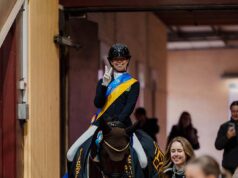By Editorial submission
With regard to sport ponies in jumping, do sporting results from the same genetics indicate the same mechanisms as those of the sport horse. A French example makes interesting reading in this respect.
The use of young stallions, a practice known as ‘young genetics’, is naturally interesting to a studbook for sport horses. Despite increasingly obvious internationalization, this practice prevents genetics being completely diluted by other European studbooks and allows it to retain its original specificities. It also avoids or delays the consequences of the strong in-breeding factor.
Nothing is alike regarding the sport pony
More recently than for sport horse breeding, the specific goal of breeding a sport pony has its origins outside France: Ireland, Great Britain, the Netherlands, Scandinavian countries, etc. Additionally, the volume of native quality mares is infinitely less important in the sport pony than in the horse. Therefore, the question is whether it is even wise to retain the best mares to develop a young genetics program.
If this policy is conceivable from a long-term perspective and can be managed and called ‘heritage’, it’s necessary to admit that in the short term the qualitative progression of the breed is accelerated by using the best stallions, often from abroad. Crossed with the best mares, according to the location of breeders, this will improve the quality of the studbook and the elite ponies to come.
Returning to the sport horse, these principles are the driving force of young studbooks when launching their programs. In other words, taking shortcuts. The study carried out in France on all the stallions involved with the so-called ‘young genetics’ program has provided some striking results... To read the complete article you need to be a subscriber
CLICK HERE TO SUBSCRIBE TO BREEDING NEWS
SUBSCRIBERS CAN READ THE COMPLETE ARTICLE BY LOGGING IN AND RETURNING TO THIS PAGE




